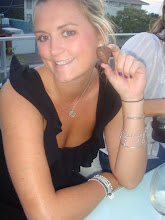
Monday, May 25, 2009
Saturday, May 23, 2009
Friday, May 22, 2009
1:1 model #2
 This is my refined model. I reduced the height of the backrest to accomodate to the size of the sheet of xanita which worked out well actually as I don’t want the back rest to be too inviting so that people want to lean back in the chair as it is not one for relaxation. I also reduced the amount of material at the back which i think works quite nicely too as you get some nice shapes coming through from the side tabs. I have maintained the 3 step curve for the seat etc as I think it ties in well with the rest of the geometric folds of the chair however I will look further into how to achieve a curve without tearing the material. I cut small holes from the corners where the seat, front and side panels meet to reduce the stress but there was still some tearing. The side tab measurements are right as they tuck in nicely one it is all locke together.
This is my refined model. I reduced the height of the backrest to accomodate to the size of the sheet of xanita which worked out well actually as I don’t want the back rest to be too inviting so that people want to lean back in the chair as it is not one for relaxation. I also reduced the amount of material at the back which i think works quite nicely too as you get some nice shapes coming through from the side tabs. I have maintained the 3 step curve for the seat etc as I think it ties in well with the rest of the geometric folds of the chair however I will look further into how to achieve a curve without tearing the material. I cut small holes from the corners where the seat, front and side panels meet to reduce the stress but there was still some tearing. The side tab measurements are right as they tuck in nicely one it is all locke together.I also need to lock the back together to restrict any movement sideways. I will do this discretely inside the unit so that it is not visible. Overall, I am happy with the shape, proportions and form.
Friday, May 15, 2009
1:1 model
 This is my first 1:1 mock up of my chair. I think that overall the shapes and forms I have achieved are quite interesting and I made sure that I considered the chair at all angles you look at it. I managed to get the tabs that came off the side of the seat surface to tuck in nicely to follow the folds on the side supporting surfaces as well as tuck in neatly behind to lock it all together. I was able to sit on this chair will some precaution as I didnt want it to break before I took it into class but it was reassuring to know that it held the majority of my weight even though it was made from a thinner, weaker cardboard than the xanita board will be.
This is my first 1:1 mock up of my chair. I think that overall the shapes and forms I have achieved are quite interesting and I made sure that I considered the chair at all angles you look at it. I managed to get the tabs that came off the side of the seat surface to tuck in nicely to follow the folds on the side supporting surfaces as well as tuck in neatly behind to lock it all together. I was able to sit on this chair will some precaution as I didnt want it to break before I took it into class but it was reassuring to know that it held the majority of my weight even though it was made from a thinner, weaker cardboard than the xanita board will be.I did come across a couple of problems when making this chair and that was the curve at the front. Because it is visible, I will need to work to refine it in order to allow it to bend without tearing. I also need to reduce either the width or height of the flat pattern as it didnt fit properly onto the size that our final xanita board will be. To do this, I will take the supporting surfaces down about 20mm and then reduce the size of the back rest and and the material that tucks down the back.
Tuesday, May 12, 2009
Concept development and refinement

Here I was refining my concept and looking at the ways in which to develop it further in terms of the shape and ways of achieving the curve. I first tried to mark out where i would need to make the cuts on ome of my existing pasteboard models. I then tried it multiple times in xanita board varying the width of the gap made between the front surface and the seat. I had trouble with this section because where the two curved faces met, the thin layer of card tore.
I experimented with just having scores along the underside of the seat as well as actually removing material. I also looked at having less of a gradual curve and making it curve using just three flat surfaces at different angles. I like this idea as it created a more enticing seat yet still stuck to the 'truth to material' idea.
As I would like to conceal all cuts made to achieve folds by having them all on the interior of the chair, I focused on trying to achieve bends through cutting only the undersides of all the surface. I may have to consider looking at cutting the visible side of the seat to achieve a good curve.
Monday, May 4, 2009
Concept Progression


